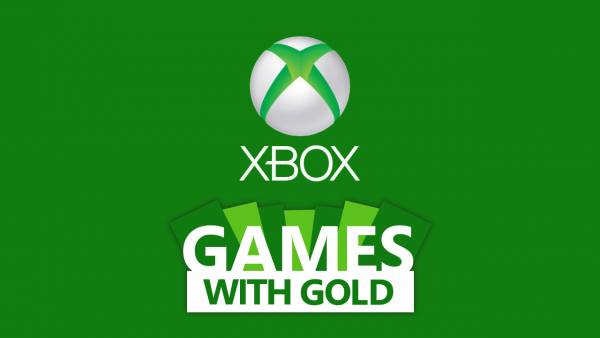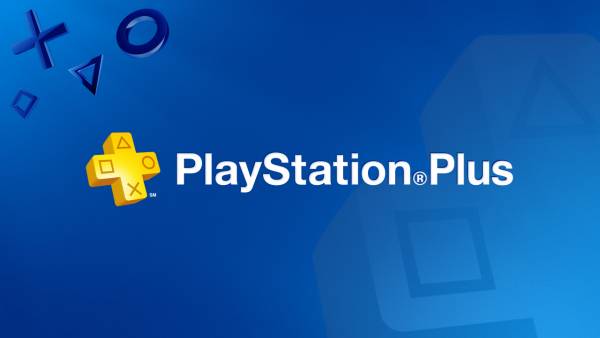As the latest edition to MercurySteam’s Castlevania reboot, Castlevania: Lords of Shadow – Mirror of Fate HD has faced some harsh criticism since its release, and not for its ridiculously long title. From its lower difficulty level to its confused sense of identity, Mirror of Fate certainly is a little different from your average Castlevania game, but being different doesn’t always have to be a horrible thing.
In this Lords of Shadow entry you play through three main acts; one as Simon Belmont and two as his father, Trevor. Through these you learn the fate of the Belmont family and their connections to the Mirror of Fate, while also providing a prelude for Gabriel Belmont in the upcoming Lords of Shadow 2. Most of the in-game events take place in and around Dracula’s Castle, where Gabriel lies in wait, and while each act is very different, you will find yourself revisiting some areas of the castle on your travels.
A throwback to the older entries in the Castlevania series, Mirror of Fate takes on the classic side-scrolling design, giving you the choice to either find your own way through with trial and error, or diligently move towards the destination marker on the map. Along the way you’ll face some monsters, find some loot, and tackle a few puzzles. It’s a generally well-paced system, but this is by no means the best or the most challenging side-scroller in the series. Pull a conveniently placed box to reach a conveniently placed ledge; venture down a conveniently placed dead end to find a conveniently placed piece of loot; for the most part it’s very predictable.
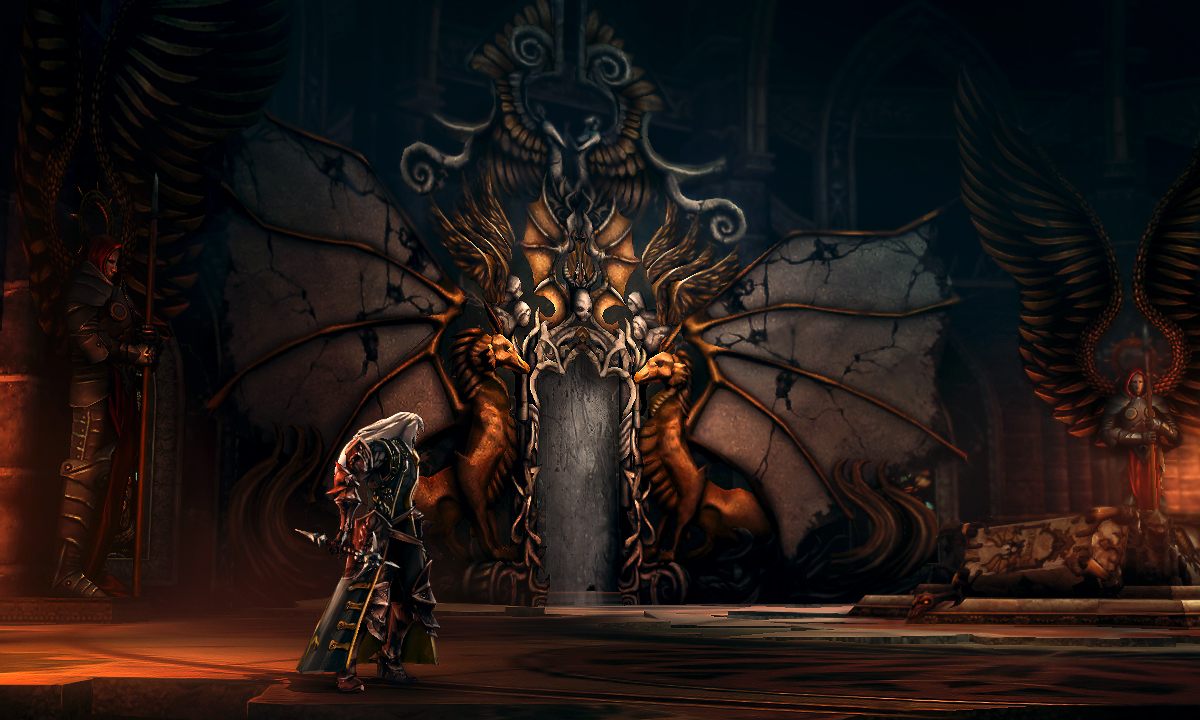
Graphically, Mirror of Fate looks as acceptable as you would probably expect from a 3DS port. It’s good enough to not feel like you’re playing a game from 10 years ago, but not quite up to the usual console standards. The menus do leave a lot to be desired, though, as they look like they were taken straight from a retro Castlevania title, and are a little tricky to read in places. Some features such as note making on the map also don’t translate too well, with typing notes using a controller being considerably more cumbersome than scribbling on a touch screen.
While the graphics themselves aren’t too much of an issue, the strange choice of using two very distinct art styles throughout Mirror of Fate is definitely a problem. A cell-shaded approach is used for most major and some minor cut scenes, and while they look good, they feel very out of place when compared to the more realistic styling of the main game. On top of this, there are times during the scenes when the lip syncing doesn’t quite work and the movement looks delayed, which means they really do nothing more than break up the otherwise seamless game experience.
The conditions for the cut scenes also remains a mystery, as some pre-boss fight scenes are cell-shaded while others are not. It feels as if the developers really wanted to push these designs into the game but couldn’t quite agree on where to put them, or didn’t have the time to make them all. Whatever the reason, the whole thing feels a little off, and I think a more consistent use of the cut scenes, or a single art style throughout, would have made the whole game experience run significantly more smoothly.
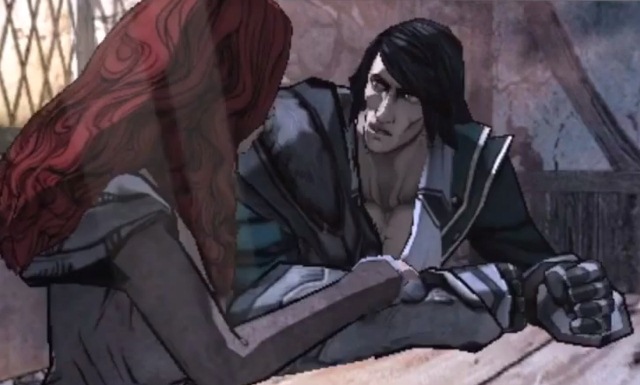
The story takes place a little bit of everywhere, too, with events from before Lords of Shadow shown through cut scenes, while the bulk of the game occurs after, in a broken timeline. The non-linear narrative is confusing at first but things slowly begin slotting into place as you play through the acts and get the bigger picture, providing a couple of ‘ah-ha!’ moments as the events start to align. While this staggered discovery method is intriguing, it can be off putting at first if you’re not a long term fan of the series, as narrative is fairly limited. In Act 1, for example, there is hardly any explanation as to why you’re running around a castle as an angry Scot, other than his outbursts of seeking revenge, which is nothing particularly unusual and does little to clarify anything.
There are also a few times during Mirror of Fate when activities seem unnecessarily drawn out. At one point in the game, you have to back track through the entire castle just to pick up an item, and then trek all the way forward again, which feels like far too much of a chore. If you’re going for 100% I suppose this would be a good time to collect all those extra items, but for someone who just wants to get on with the story, it was more than a bit tiresome, and not even worth what little experience you picked up from fighting creatures along the way. Luckily this excessive travelling isn’t a problem if you accidentally jump to your death, as I tend to do, as checkpoints are placed plenty and often, allowing you to pick up where you fell off.
All that said, Mirror of Fate’s most redeeming features are, without a doubt, the overall atmosphere and strong creative vision of the main game. Occasional jump-scare moments and all, the castle is full of dark corners and gothic music to keep the sombre, vampiric vibe alive. Both the interior and exterior of the castle are made up of a varied collective of unique domains which all fit together well and create a great corner of the world to roam around in. From the creepy theatre full of puppets and unsettling masks, to the depths of the cells where skeletons run amok, to some surprisingly enjoyable underwater sections, everything just works.
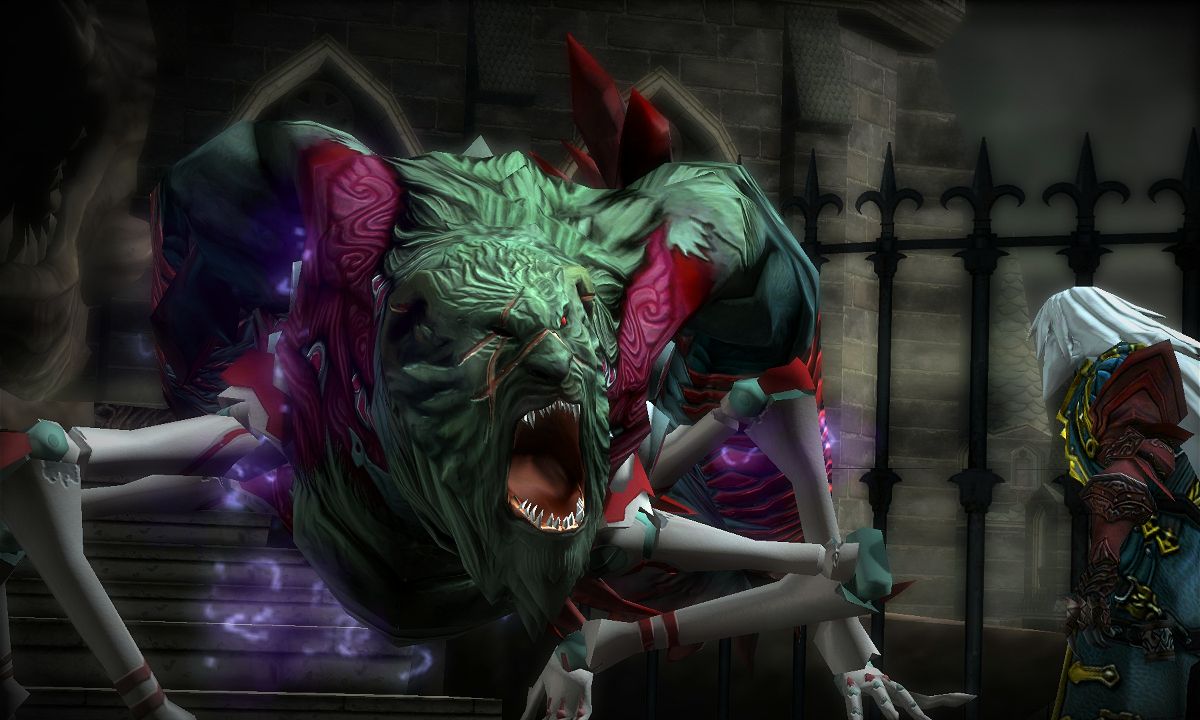
The enemy designs are all spot on, too, and keep you on your toes with different methods being best to dispatch each type, though a good button mashing will get the job done as well. Similarly, the larger puzzles, while not the trickiest you’ll ever face, do make your brain tick over and give you a great feeling of accomplishment once completed. The boss battles provide the same sense of achievement as well, and are by far the biggest challenges Mirror of Fate has to offer. When considering that the normal combat is, at times, pretty simple, the extra challenges presented by the boss fights are very welcome, though they still don’t hit the usual high difficulty standards of most Castlevania games.
For all its faults, Mirror of Fate is by no means a bad game. It’s average with moments of madness, but not bad. For a fan of the franchise, and a player of Lords of Shadow, it should be a satisfactory addition to the series as a segue between the predecessor and its sequel. However, if you’ve never played Castlevania, it doesn’t really make any sense as a stand-alone entry, and probably isn’t going to convert you. But at half the price of the 3DS version, if you’re already playing the new iteration of the Lords of Shadow series, you might as well pick it up for console. If you don’t, well, you won’t lose any sleep over it, either.
Let us know what you think in the comments below.
